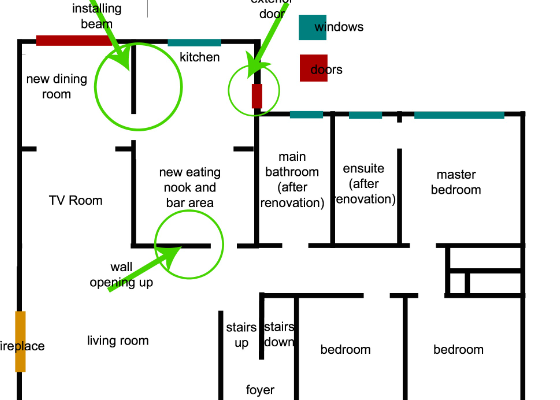An automated payment system can reduce errors and improve your business’s financial health. However, this type of solution is a cost. A unified payment system with thorough tracking and reporting offers better transparency. This can help avoid invoice mistakes and ensure payments are sent on time.
Table of Contents
Faster Payments
For businesses that invoice recurring payments (software subscriptions, retail box subscriptions, or recurring retainers), an automated payment system can save time and money by automating the invoicing process. Automated systems can send out invoices faster and automatically collect payments based on the contract’s payment terms. Payment automation has been shown to promote prompt payment and can improve the overall cash flow of businesses with any invoice volume. For example, companies with low invoice volumes who use an automated solution have been shown to experience on-time payments 33% of the time compared to 24% without automation.
Streamlining and integrating an automated payment system can reduce the number of manual activities in the accounts payable department, which allows for better coordination between the procure-to-pay function and accounting. This can allow for faster processing of payments, which can help a company take advantage of early-payment discounts and optimize working capital. Furthermore, the cost of a digital payment is significantly less than that of a paper check. This is a crucial benefit for the business, as it can save on costs associated with purchasing and distributing paper checks and envelopes.
Reduced Risk of Error
The benefit of an automated payment system is it eliminates manual data entry, speeds up invoice processing time, and improves transparency. It also reduces errors and prevents duplicate payments. This creates a more efficient financial management system that benefits your business and customers. For example, checking payment information manually is prone to human error (lost checks or incorrect data input). Automated systems eliminate these errors and ensure the accuracy of payments. They also reduce the money spent on paper, envelopes, and stamps and save on employee labor costs to handle the payment process. In addition, online payments are secure and encrypted. This means there is less risk of fraud and a reduced chance of data breaches. This means your business can spend more time on the things that matter most – such as improving customer satisfaction and strengthening cash flow.
Increased Customer Satisfaction
The human resources previously spent manually processing invoices will be freed up to work on more critical projects, boosting employee satisfaction. The time saved by automation will allow your business to reduce late payments, saving money in interest fees and penalties. Customers are more satisfied with businesses that quickly resolve issues with accurate billing, which can lead to repeat business and word-of-mouth referrals. The bottom line is that happy customers buy more, which means a higher customer lifetime value. Unlike traditional paper systems, payment automation allows businesses to keep digital records of invoices and purchase orders for faster tracking. This helps improve supplier relationships and reduces lag times in accounts payable processing. Plus, automated systems provide centralized data to help you identify trends and insights that may impact your strategy. This is how you can better understand your customer purchasing habits and make informed strategic decisions to drive growth. As a result, your customer satisfaction scores will rise, and you’ll reduce the churn rate. This is good news for your brand reputation.
Better Cash Flow Management
By using an automated payment system, businesses can improve cash flow management. This allows them to get paid more quickly and eliminates the risk of lost or stolen invoices. It also helps them build stronger supplier relationships and improve invoice processing workflows. Additionally, automated systems keep digital records of invoices and purchase orders for better visibility into revenue. A unified payment infrastructure seamlessly tracks every invoice, from scanning and uploading to approval to payment. This reduces misplaced invoices and provides complete transparency at each step in the process. It also allows businesses to use strategic tools that optimize cash position, like supply chain financing and dynamic discounting.
Additionally, automated payment systems help staff focus on customer service instead of fielding calls regarding overdue invoices. This helps employees feel more engaged in the company and improves overall work satisfaction. It also frees them up to take on additional tasks or training courses to help the business grow and improve its bottom line. This enables employees to focus on areas of the business that they are most passionate about.
Reduced Labor Costs
One of the most significant benefits of using an automated payment system is that it reduces the labor costs associated with manual payment methods. Manual payments require using paper, envelopes, stamps, and other resources. Automated systems eliminate these costs and process transactions electronically, which reduces processing times and minimizes human error. Additionally, an automated payment system can help businesses save money on a long-term basis by reducing the number of late or failed payments. These errors can be expensive, not just in dollars but also in lost customer trust and business reputation. Automated systems can also reduce operational costs by eliminating the need for specialized software or other costly hardware. Finally, automated payments can also help improve supplier relationships and streamline invoice processing workflows. This can be accomplished by allowing suppliers to self-service via a digital portal, providing real-time visibility into transaction status, and simplifying the overall payment experience for all parties involved. This can also help eliminate duplicate payments, a common problem when using traditional payment methods. The bottom line is that automated systems are more cost-effective than manual payments and can improve supplier relationships and business cash flow.





